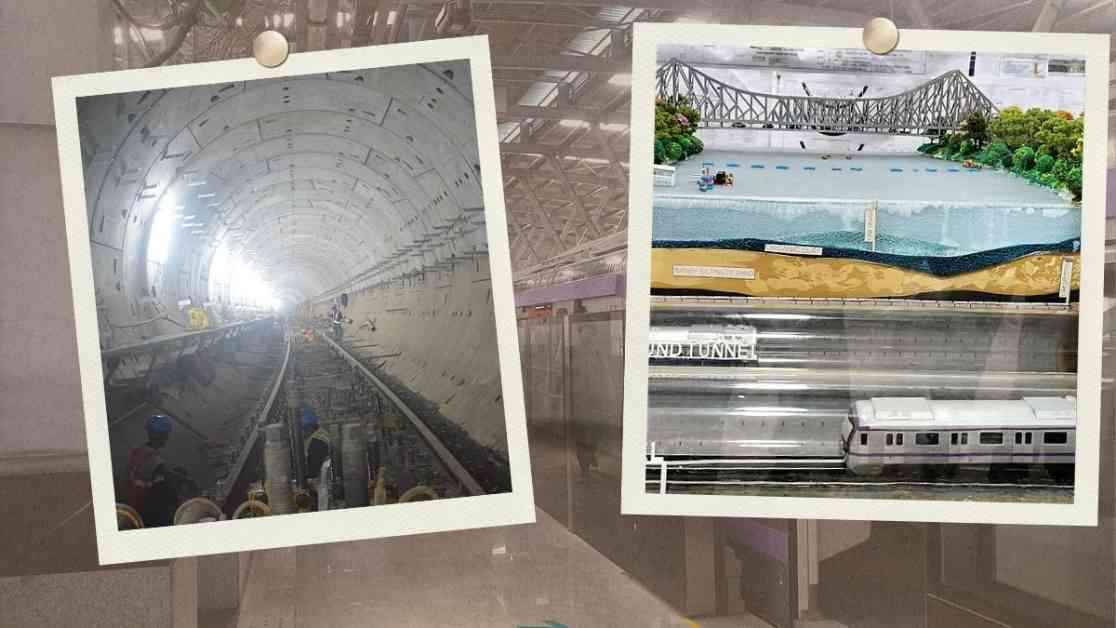Kolkata Breaks Ground with India’s First Underwater Metro Expedition
It was a balmy Saturday morning when my family proposed a unique adventure: a ride on Kolkata’s underwater Metro. As someone who harbors a fear of enclosed spaces and a distaste for the sweltering weather, I hesitated. However, as a lifelong resident of Kolkata, the prospect of experiencing India’s inaugural underwater Metro line beneath the river’s surface was too enticing to resist.
In 1984, Kolkata etched its name in history by introducing the country’s maiden urban rapid transit system, the Kolkata Metro. Fast forward to March 6, 2024, and the city once again made headlines as Prime Minister Narendra Modi inaugurated the grandeur of India’s largest under-river metro tunnel. This monumental feat placed Kolkata in the esteemed company of global counterparts like London’s metro beneath the Thames and Paris Metro under the Seine.
Venturing into the deep waters of innovation
The underwater marvel forms an integral part of the East-West corridor, linking Salt Lake Sector V in the East to Howrah Maidan in the West. Though the corridor’s construction journey commenced in 2009, the underwater tunneling saga unfolded in 2017. Spearheading this aquatic endeavor was Mumbai-based Afcons Infrastructure Limited, a multinational construction and engineering powerhouse.
Embarking on this aquatic odyssey, my family and I embarked on a brief autorickshaw jaunt from our abode in Sinthi, North Kolkata, to the Dumdum Metro Station. Boarding a Blue Line train of the North-South corridor, we seamlessly transitioned to a Green Line train at Esplanade Station, poised to traverse the underwater path to Howrah Maidan.
The Esplanade Station beckoned with a vibrant tapestry of enchanting murals adorning its walls. From iconic landmarks like the Victoria Memorial to the delightful imagery of Kolkata’s famed phuchka and Bapuji Cake, the station exuded a captivating charm.
Journey beneath the waves: a tale of thrill and convenience
As our train delved into the tunnel’s abyss, the blue-hued illumination enveloped us, signifying our subaquatic voyage. The fleeting moments of trepidation were swiftly overtaken by wonder and awe as we traversed the 520-meter underwater stretch. The journey beneath the Hooghly River, encapsulated by the gentle glow of blue lights, was a sight to behold.
Emerging from the depths, we reached Howrah Maidan Station in a mere 10 minutes, a stark contrast to the arduous hour and a half road trip during peak hours. The Kolkata Metro had seamlessly transformed a daunting commute into a swift and exhilarating escapade.
Empowering the masses with connectivity
The East-West corridor emerges as a boon for Howrah denizens, streamlining their daily commutes to the city hub. The Esplanade Station, serving as a pivotal interchange between the Blue and Green Lines, heralds a new era of connectivity and convenience. As the metro network expands its operational horizons, spanning crucial hubs like Howrah Station, Sealdah, and Salt Lake, the daily grind of commuters is poised to witness a transformative overhaul.
Intricately woven into Kolkata’s urban fabric, the underwater tunnel stands as a testament to human ingenuity and perseverance. A remarkable engineering marvel that transcends mere functionality, it serves as a source of immense pride for every denizen of the City of Joy.
As you traverse the vibrant streets of Kolkata, don’t forget to add this enthralling underwater saga to your itinerary. Dive deep into the heart of the city and embark on an unforgettable aquatic adventure.
TRIVIA: The tunnel boring machines used for this project were christened Prerna and Rachna, in loving memory of Bimal, a cherished team member whose dedication and spirit continue to inspire all who traverse the depths of Kolkata’s underwater Metro.














